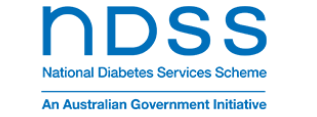What is type 1 diabetes?
Type 1 diabetes is a serious condition caused by an autoimmune response, where the body’s immune system mistakenly destroys the cells in the pancreas that produce insulin. As a result, the body can no longer produce insulin.
Insulin is the hormone that allows glucose from the bloodstream to enter cells around the body, where it is used for energy. Without insulin, glucose builds up in the bloodstream and can make a person extremely unwell.
Currently, type 1 diabetes cannot be prevented or cured. People who live with type 1 diabetes must give themselves insulin and check their glucose levels for life. Insulin is a lifesaving medication.
This short animation explains how type 1 diabetes affects the body and why insulin is needed to manage blood glucose levels. Watch the video below.
Who gets type 1 diabetes
Thousands of school-aged Australians live with type 1 diabetes.
Type 1 diabetes cannot be prevented, and the cause is not fully understood. There is currently no cure, however, it is manageable.
It can affect people of any age, but it usually develops before age 40. It is one of the main types of diabetes, and the most common type of diabetes in children and young people.
Another main type of diabetes is type 2 diabetes. Type 1 and type 2 diabetes are not the same, however, both are serious conditions.
Managing type 1 diabetes at school
Students living with type 1 diabetes do not produce insulin. This means they need to inject insulin or use an insulin pump. Every day they must make decisions and take action to keep their glucose levels within their target range.
Each day with type 1 diabetes is different, as insulin, food, exercise, and stress all affect glucose levels. A student will need to consider how these things affect their glucose levels and act when necessary. It can be challenging to constantly monitor these factors and make so many daily decisions.

Type 1 diabetes can affect a student’s health, how they feel and their ability to cope at school. Students and their families do their best to keep glucose levels within target range. But this can be difficult when so many different things affect their glucose levels.
Supporting a student with type 1 diabetes
Schools have a responsibility to provide a supportive environment for all students with a medical condition, including students with type 1 diabetes.
School staff may be required to provide additional support to help students manage their type 1 diabetes and participate in school life like their peers. These supportive actions are called reasonable adjustments.
 |
 |
 |
 |
 |
 |
Ways that schools and school staff might be required to support a student include:
- setting up ways to communicate with parents and/or carers about a student’s day-to-day type 1 diabetes care (e.g. a diary, phone calls or regular meetings)
- following a student’s diabetes management plan to treat low and high glucose levels
- giving a student access to their blood glucose monitor, insulin, and hypo treatment foods
- making sure a student has access to water (for drinking or to wash hands)
- allowing a student to eat at additional times in class or during physical activity
- allowing extra bathroom access
- making special considerations during exams and tests
- supervising diabetes management tasks if required (e.g. injecting insulin, checking blood glucose levels and managing an insulin pump)
- providing privacy for checking blood glucose levels and/or injecting insulin, if requested.
Some students may need additional support and guidance to manage their type 1 diabetes.
The diabetes management plan
A student’s diabetes management plan is an essential document that guides how schools can support the student to learn and participate fully at school. The student’s diabetes health professional(s) will usually develop the plan with the student and family.
If you are interested in supporting a student with type 1 diabetes, the Diabetes in Schools training program is designed to upskill schools and staff across multiple areas and situations.
Frequently asked questions about type 1 diabetes
-
What causes type 1 diabetes?
The exact cause of type 1 diabetes is unknown. We do know that some people carry genes that make them more likely to develop type 1 diabetes. Type 1 diabetes occurs when something triggers the immune system to start destroying the insulin-producing beta cells in the pancreas. Researchers are working to identify what those triggers are.
-
Can type 1 diabetes be prevented or cured?
There is currently no way to prevent or cure type 1 diabetes, but researchers are working on this. If type 1 diabetes is managed well, people can continue to lead a healthy life.
-
How is type 1 diabetes managed?
People with type 1 diabetes cannot make their own insulin, so they need to replace it. This is done by injecting insulin or by using an insulin pump. Each person with type 1 diabetes will work with their doctor to decide on the type, amount and timing of insulin needed to keep their blood glucose levels in their target range. They will also need to check their blood glucose levels regularly, follow a healthy eating plan, and stay physically active.
Keeping blood glucose levels in their target range helps people with type 1 diabetes stay well in the short term and reduces their risk of long-term complications, such as damage to the eyes, kidneys, nerves, and blood vessels.
-
What are the symptoms of type 1 diabetes?
The most common symptoms of undiagnosed type 1 diabetes include:
- being thirsty and drinking much more than usual
- passing urine more often
- feeling tired and low on energy
- unexplained weight loss
- genital thrush
- mood changes.
The symptoms of type 1 diabetes can develop quickly and need immediate medical attention.
-
What happens if type 1 diabetes is not treated?
If type 1 diabetes is left untreated, diabetic ketoacidosis (DKA) will develop.
DKA occurs when the body cannot use glucose for energy, and makes chemicals called ‘ketones’ to use for energy instead. Ketones cause the blood to become too acidic. High glucose levels result in a loss of body salts and fluids. This is life-threatening and requires urgent hospital treatment.
-
What is the difference between type 1 and type 2 diabetes?
Type 1 diabetes is usually diagnosed before the age of 40 years and occurs when the immune system destroys the insulin-producing cells in the pancreas. It affects about 10% of people with diabetes in Australia. The only treatment for type 1 diabetes is insulin, which is given by injections or infused with a pump.
Type 2 diabetes is the most common type of diabetes. It affects over 90% of people with diabetes in Australia. Type 2 diabetes is usually diagnosed in people aged over 40 years, though the condition is becoming more common in younger people. Symptoms can develop slowly over many years. In type 2 diabetes the body either does not produce enough insulin or becomes resistant to it. In the early stages, it may be managed with diet and exercise; however, many people will need to start taking medication or insulin as the condition progresses.
Last updated: September 2025


